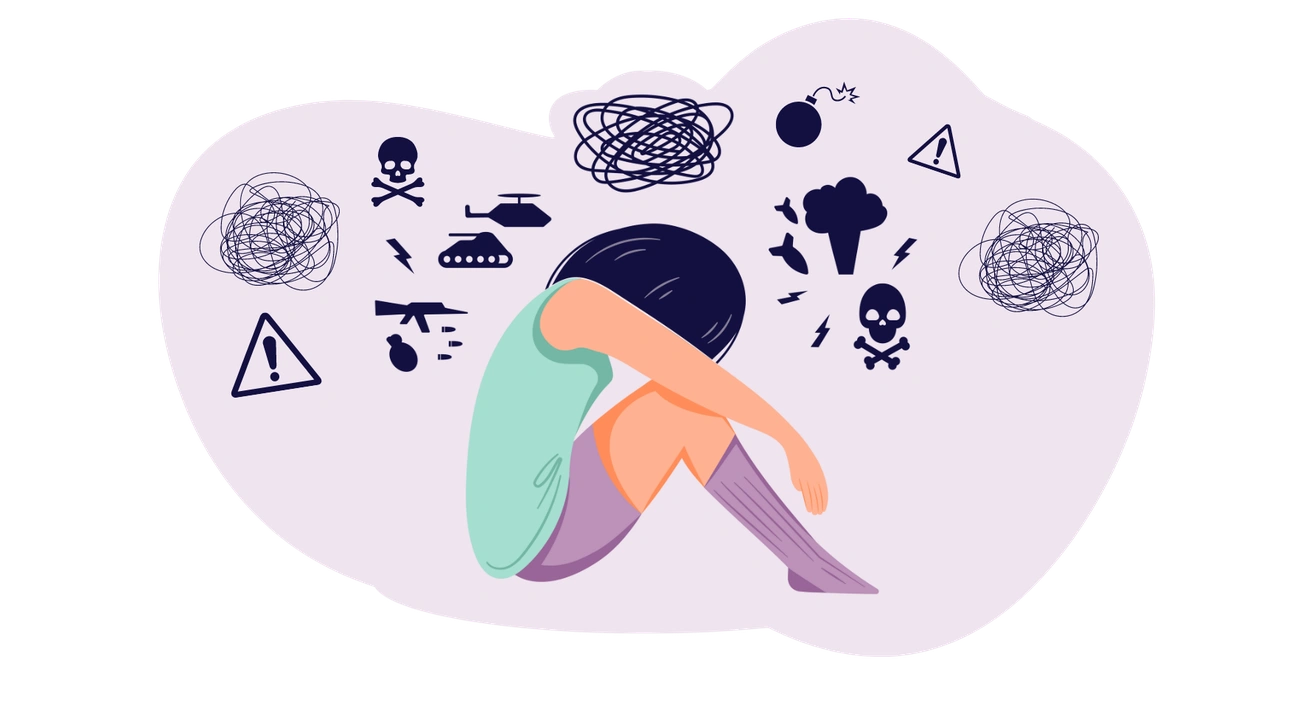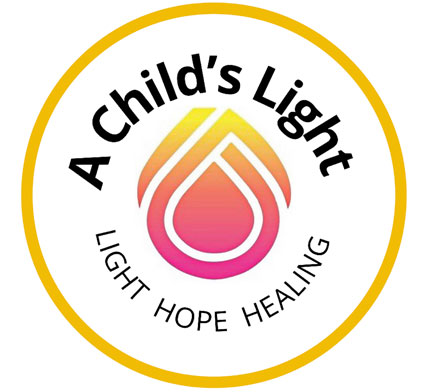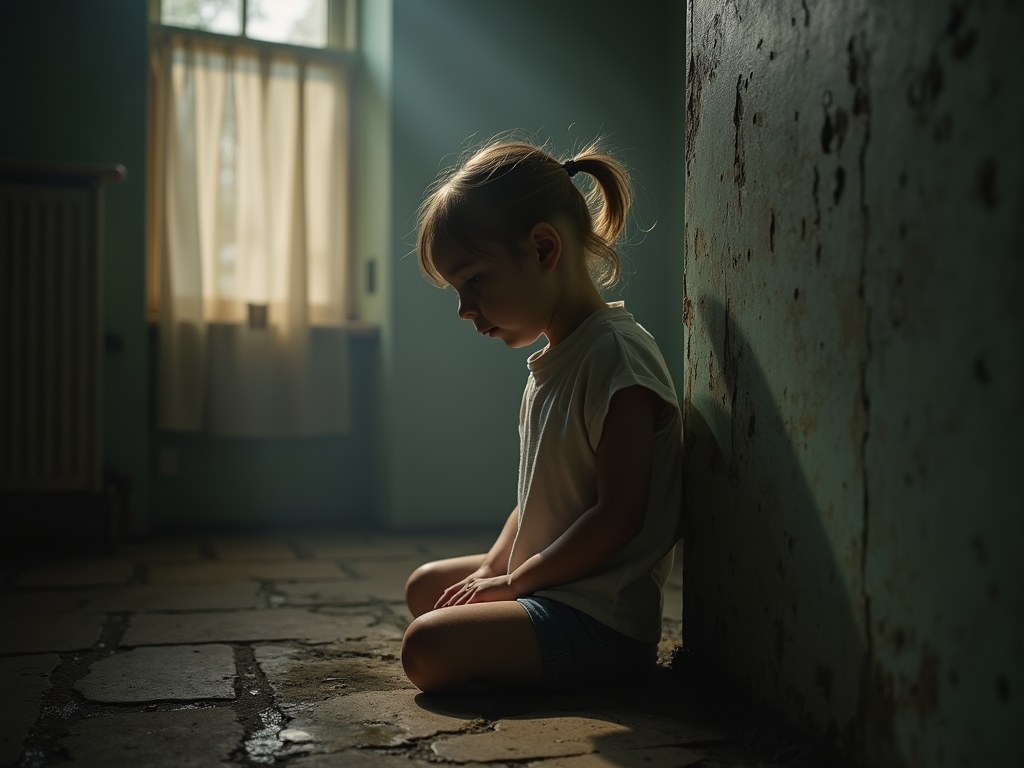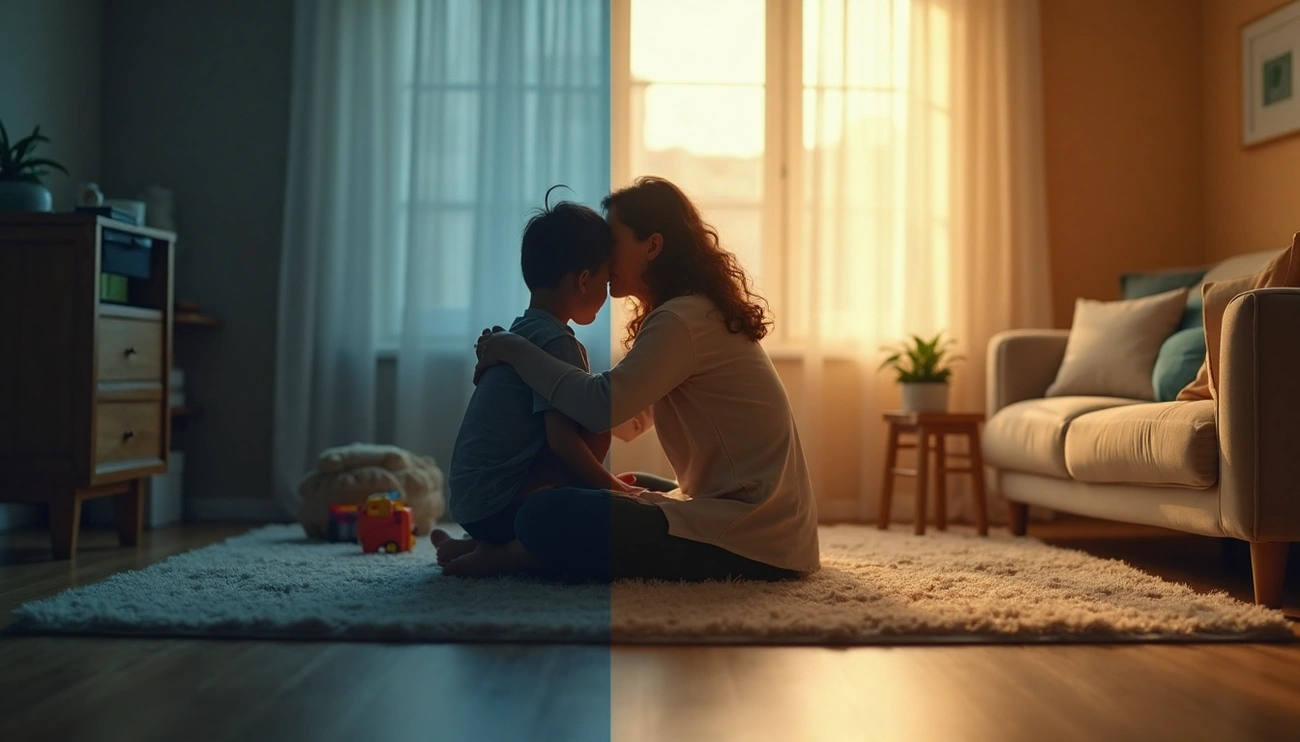About 64% of adults in the United States have experienced at least one adverse childhood we experience before the age of 18 . When you understand what constitutes childhood trauma, you can better protect your children and help those who have already been affected.
Childhood traumas can take many forms, from physical abuse to natural disasters, and their effects can be far-reaching. Nearly one in six adults (17.3%) report experiencing four or more types of these traumatic experiences . The first 1001 days of a child’s life, from pregnancy until age two, are particularly crucial as they lay the foundation for later health and happiness . Furthermore, children who have experienced early trauma are more likely to struggle with learning, exhibit behavioral issues at school, and develop mental health problems like anxiety and depression later in life .
In this guide, you’ll learn about the eight major types of childhood trauma, their potential impacts, and how to recognize their signs. By gaining this knowledge, you can become better equipped to provide the safety, stability, and support children need to heal and thrive despite adverse experiences.
Understanding childhood trauma and its roots

Childhood trauma
Image Source: Clarity Clinic
“Child abuse casts a shadow the length of a lifetime.” — Herbert Ward, Renowned British journalist and humanitarian
Childhood trauma occurs when frightening, dangerous, or violent events overwhelm a child’s ability to cope with their emotions and experiences. In 2018 alone, child protective services received more than 4 million reports involving approximately 7.8 million children. Yet official reports only capture part of the picture—research suggests that more than 40% of individuals experience some form of maltreatment during childhood.
What makes an experience traumatic?
Not every difficult experience leads to trauma. What makes an event traumatic is how it affects the child’s sense of safety and well-being. A traumatic event typically involves:
- A threat to life or physical safety (either experienced directly or witnessed)
- An overwhelming feeling of fear, helplessness, or horror
- Situations that exceed the child’s ability to cope or make sense of what happened
As noted by trauma experts, “Child traumatic stress occurs when children and adolescents are exposed to traumatic events or traumatic situations that overwhelm their ability to cope”. Consequently, these experiences can trigger intense emotions and physical reactions that persist long after the event has ended.
Children may respond to trauma with heart pounding, vomiting, or loss of bodily control. Additionally, they might show behavioral changes, difficulties with self-regulation, problems forming attachments, regression, attention issues, sleep disturbances, and physical symptoms like aches and pains.
It’s important to recognize that children interpret experiences differently. As one source notes, “a life experience that is traumatic for one child might not be traumatic for another”. Indeed, a child’s response depends on their age, developmental stage, personality, and the impact of the crisis on their caregivers.
The role of safety and stability in childhood
Safety and stability form the foundation upon which healthy child development builds. The Centers for Disease Control and Prevention defines safety as “the extent to which a child is free from fear and secure from physical or psychological harm within their social and physical environment”. Meanwhile, stability refers to “the degree of predictability and consistency in a child’s social, emotional, and physical environment”.
Children naturally need to explore their world, but they can only do so confidently when they feel protected. For this reason, creating safe, stable, nurturing relationships and environments is essential for helping children thrive and protecting them against the negative effects of violence and trauma.
When children lack this security—whether through inconsistent parenting, neglect, or trauma—the effects can echo throughout their lives. The landmark Adverse Childhood Experiences (ACEs) study reveals that childhood trauma can increase risks for:
- Mental health problems
- Involvement in the child welfare or juvenile justice systems
- Long-term health issues like diabetes and heart disease
- Earlier mortality
These outcomes occur because traumatic stress affects brain development, immune function, and stress-response systems. Most importantly, toxic stress from adverse childhood experiences can negatively impact children’s attention, decision-making, and learning abilities.
Children who grow up with emotional security, on the other hand, develop what psychologists call “secure attachment”—a foundation that allows them to explore the world with confidence, regulate emotions effectively, and form healthy relationships later in life.
Above all, understanding the roots of childhood trauma helps parents and caregivers create environments where children can heal and thrive despite adverse experiences.
1. Physical abuse
Physical abuse stands as the second most common form of child maltreatment, with approximately three million cases reported annually involving almost 5.5 million children. This intentional use of force results in physical injury—ranging from minor bruises to severe fractures or death—and can occur through punching, beating, shaking, kicking, biting, throwing, stabbing, hitting, burning, choking, or otherwise harming a child.
Visible injuries and hidden scars
The physical evidence of abuse often presents in distinctive patterns that differ from typical childhood injuries. While all children experience bumps and bruises, certain signs warrant attention:
- Unusual bruising patterns reflecting the shape of instruments used (belts, hangers, hands)
- Burns that cannot be adequately explained, including cigarette burns, immersion burns, or “stocking” and “glove” burns
- Injuries in locations where children don’t typically get hurt (torso, back, buttocks, thighs)
- Frequent injuries without adequate explanations
However, not all physically abusive actions leave visible marks. The emotional wounds can persist long after physical injuries heal, creating what experts call “hidden bruises.” Children who experience physical abuse often develop a complex array of psychological responses. Many struggle with low self-esteem, excessive fear and anxiety, eating disorders, concentration difficulties, hostility, depression, and sleep issues.
Trust becomes particularly problematic. Children who have suffered physical abuse frequently distrust authority figures and have difficulty with basic social skills. These children may shrink away when adults approach, display “frozen watchfulness,” or constantly ask what will happen next—signs they’re perpetually on guard.
Every child responds differently. Some become aggressive or act out behaviorally, while others withdraw completely—no longer reacting to being hit and losing their normal fight-or-flight responses designed to protect from danger.
How fear becomes chronic stress
What makes physical abuse particularly damaging is how it fundamentally alters a child’s developing brain and body. When children grow up afraid or under constant stress, their immune system and stress response mechanisms don’t develop normally.
The research reveals a troubling physiological cascade: exposure to physical abuse triggers toxic stress that damages the architecture of the developing brain. The area controlling fight-or-flight overdevelops, while regions governing emotion, cognitive thinking, and understanding of risk and consequences become stunted.
This biological rewiring explains why physically abused children often show dysregulated responses to ordinary stressors—either overreacting with significant physiological responses like rapid breathing and heart pounding, or “shutting down” entirely. These reactions, though adaptive when facing genuine threats, become problematic in everyday situations.
The long-term health implications are equally concerning. According to population-based studies, adults who experienced childhood physical abuse show a graded increase in depression, anxiety, anger, physical symptoms, and medical diagnoses decades later. Even after controlling for family background and other childhood adversities, physical abuse predicts approximately 21% more medical diagnoses, 22% more physical symptoms, 24% higher depression rates, 27% increased anger, and 23% greater anxiety.
These elevated risks include heart, lung, and liver disease; obesity and diabetes; increased suicidal thoughts; substance abuse; and various somatic conditions like fibromyalgia, chronic fatigue syndrome, and irritable bowel syndrome.
Most distressing of all, five children die from abuse every day, with most victims under three years old. However, with proper identification and treatment, children can begin regaining self-confidence and trust. Understanding these patterns helps concerned adults recognize warning signs early and intervene before adverse childhood experiences permanently alter a child’s developmental trajectory.
2. Emotional abuse
Emotional abuse represents the most common form of childhood maltreatment, with prevalence rates estimated at 36.3% globally . Unlike physical abuse, the wounds from emotional abuse remain invisible yet cut deeply into a child’s developing sense of self and security.
Words that wound: verbal and psychological harm
Emotional abuse involves the continual mistreatment of a child through behaviors that attack their basic emotional needs or consistently prevent such needs from being met. This form of abuse communicates to children that they are unlovable, worthless, flawed, or in danger.
Children experience emotional harm through various damaging interactions, including:
- Humiliation, constant criticism, and name-calling
- Threatening, shouting, or using sarcasm to hurt
- Blaming, scapegoating, or making a child the subject of jokes
- Manipulating or controlling a child’s life
- Withholding love, support, or praise
- Never expressing positive feelings or acknowledging successes
- Pushing a child beyond their limitations
- Exposing children to distressing situations like domestic violence
Verbal abuse, specifically, deserves particular attention as recent research suggests it should be classified as its own category of abuse. Studies link regular verbal aggression—including shouting, threatening, belittling, and name-calling—to lasting negative consequences for children across their lifespan. Even without raising voices, adults can threaten and intimidate children, causing significant psychological harm.
As one trauma expert notes, “verbal abuse may have a greater impact because the abused child has greater difficulty defending himself from the attack”. Moreover, since children tend to identify with their parents, the verbal abuse becomes internalized—a way they subsequently abuse themselves.
Why emotional trauma is often overlooked
Despite its prevalence, emotional abuse often goes unrecognized for several compelling reasons. First, it frequently occurs alongside other forms of maltreatment, making it difficult to identify as a separate issue. In 36% of reported child abuse cases, emotional abuse was also an identified factor.
In addition, emotional abuse can be gradual and subtle—slowly eroding a child’s self-esteem without obvious external signs. Unlike physical abuse, there might not be visible injuries to prompt investigation, allowing this damaging pattern to continue uninterrupted for years.
Many children never report emotional abuse because they fear consequences or, more troublingly, don’t recognize it as abuse rather than normal behavior. Furthermore, perpetrators often appear as caring parents or guardians to outsiders, creating a stark contrast between public perception and private reality.
The impacts, nonetheless, are profound. Children experiencing emotional abuse commonly show:
- Lack of confidence or self-assurance
- Difficulties controlling emotions
- Problems forming healthy relationships
- Age-inappropriate behavior
- Seeking attention or becoming clingy
- Developing risky behaviors like stealing or running away
The long-term effects extend into adulthood, with emotional abuse linked to higher rates of depression, anxiety, substance abuse disorders, eating disorders, self-harm, and suicidal thoughts. Most concerning, recent research indicates that psychological maltreatment may be associated with the greatest number of adverse outcomes in almost all areas of assessment compared to other forms of abuse.
The scientific explanation lies partly in how emotional abuse affects brain development. Specifically, studies show emotional neglect can lead to blunted development of the brain’s reward area (the ventral striatum), potentially predicting risk for depression, addiction, and other mental health conditions.
Given these significant impacts, recognizing and addressing emotional abuse early remains essential for protecting children’s developmental trajectories and long-term wellbeing.
3. Sexual abuse
Sexual abuse remains one of the most damaging childhood traumas, affecting children across all socioeconomic backgrounds, ages, and cultures. This form of adverse childhood experience encompasses a wide range of inappropriate sexual behaviors, including touching a child’s genitals, penetration, oral sex, exposure to sexual content, and exploitation through pornography or prostitution.
Breach of trust and bodily autonomy
What makes sexual abuse particularly destructive is that it typically occurs at the hands of someone the child knows and trusts. In fact, 93% of victims under age 18 know their abuser . This fundamental betrayal by a trusted adult or older child creates a profound distortion in how children understand their world and relationships.
Sexual abuse violates a child’s bodily autonomy—their right to control what happens to their body. This violation can dramatically alter a child’s developing sense of self and safety. Following abuse, a child’s understanding of themselves and the world often becomes distorted, creating feelings of mistrust, fear, and betrayal.
Children who experience sexual abuse may display various signs, although these vary widely depending on developmental stage and circumstances. Some potential indicators include:
- Unusual changes in behavior (becoming quieter, clingier, or showing new fears)
- Knowledge of sexual behavior beyond their developmental age
- Sleep disturbances or eating changes
- Regression to younger behaviors after being toilet trained
- Vague physical complaints like headaches or stomachaches
- Acting out aggressively or withdrawing from family and friends
- Self-harm or risky behaviors
The impact extends far beyond childhood, with survivors frequently experiencing difficulties forming and maintaining close relationships throughout adulthood. Approximately 42% of sexual abuse survivors report that their abuse adversely affected relationships with others.
Barriers to disclosure and healing
Children face numerous obstacles when it comes to revealing sexual abuse. Many never disclose until adulthood—findings from the Royal Commission into Institutional Responses to Child Sexual Abuse reveal that, on average, it took survivors 23.9 years to tell someone about their abuse.
First, abusers frequently manipulate children into becoming “champion secret keepers” through threats or instilling shame. This combination of fear and shame creates powerful barriers to disclosure. Children may worry about not being believed, fear retribution, or feel responsible for protecting their family from upheaval.
Second, the trauma itself can interfere with a child’s ability to disclose. Dissociation—a psychological defense mechanism where children mentally “disconnect” from traumatic experiences—can make it difficult to articulate memories of abuse. This poses challenges when children interact with professionals or the justice system.
The response to disclosure profoundly affects healing. When children are believed and supported appropriately, they have the best chance of recovering from trauma. Conversely, negative or dismissive reactions can compound the harm, sometimes leading children to recant true disclosures.
Healing from sexual abuse is possible but complex. Recovery often requires rebuilding trust—a particular challenge given that trust is fundamentally damaged by abuse experiences. Supportive and positive responses from families, caregivers, and professionals significantly facilitate this healing journey.
Understanding these dynamics helps parents and caregivers create environments where children feel safe to disclose and receive the support needed to begin the healing process.
4. Neglect
Neglect stands as the most common form of child abuse, defined as the ongoing failure to meet a child’s basic needs. Unlike other forms of trauma that involve harmful actions, neglect represents the absence of necessary care. This invisible trauma affects brain architecture, stress response systems, and cognitive functions with consequences that can echo throughout a lifetime.
When basic needs are unmet
Neglect takes several forms, each creating distinct challenges for children’s development:
- Physical neglect: Failure to provide adequate food, clothing, shelter, or supervision. Children may appear consistently hungry, inappropriately dressed for weather, or left unattended.
- Medical neglect: Withholding necessary healthcare, including denial of medical treatment for injuries, illnesses, or dental care.
- Educational neglect: Not enrolling a child in school, allowing chronic truancy, or failing to provide needed special education.
- Physical deprivation: Denying children basic physical needs, often in a persistent pattern.
The signs of neglect may include poor hygiene, inappropriate clothing, constant hunger, untreated medical issues, frequent absences from school, and statements about having no one at home to provide care. Children experiencing neglect often demonstrate extremes in behavior—becoming either overly compliant or aggressive—and may show delays in emotional or physical development.
For young children, the impact is particularly severe. Newborns depend almost entirely on parents as “co-regulators” of their physiology and behavior. Without this crucial support, children struggle to develop self-regulation capabilities. Therefore, they often enter school poorly regulated behaviorally, emotionally, and physiologically, hampering their ability to learn and form relationships.
Research reveals that chronic neglect disrupts brain development even more extensively than other forms of maltreatment. High levels of circulating stress hormones damage developing brain regions, particularly those with high numbers of glucocorticoid receptors like the amygdala, hippocampus, and prefrontal cortex.
Emotional neglect and attachment issues
Emotional neglect—the failure to attend to a child’s emotional needs—creates wounds that are often invisible yet profoundly damaging. This form of neglect occurs when caregivers are emotionally distant, dismiss feelings, withhold affection, or fail to validate a child’s experiences.
In essence, emotional neglect teaches children their feelings don’t matter. As a result, many develop difficulty identifying and expressing emotions, leading to emotional numbing or unpredictable outbursts. As they grow, these children often struggle with low self-esteem, perfectionism, sensitivity to rejection, and uncertainty about expectations.
Attachment theory provides insight into why these problems develop. Under optimal conditions, responsive caregiving creates secure attachment, where children view themselves as worthy and others as reliable. Conversely, neglect disrupts this process. Children learn their needs won’t be met, developing insecure attachment styles that persist into adulthood.
The consequences manifest in several ways:
- Avoidant attachment: Children become hyper-independent, emotionally withdrawn, and struggle with intimacy as adults.
- Anxious attachment: Children develop fear of rejection, overreact to stress, and struggle with trust in relationships.
- Disorganized attachment: Children show contradictory behaviors, seeking closeness while simultaneously avoiding it.
Importantly, recent research suggests emotional neglect might have the most wide-ranging negative mental health impact of all childhood maltreatment types. Besides disrupting brain architecture, neglect affects stress-response systems, telomere length (associated with aging), and immune functioning.
Many well-intentioned parents unknowingly perpetuate emotional neglect, often because they experienced it themselves. The absence of harmful actions makes neglect difficult to identify, primarily because it involves the lack of something rather than the presence of obvious abuse.
Finally, healing is possible. With appropriate support, children can develop healthy attachment and emotional regulation skills, emphasizing that neglect, though damaging, need not determine one’s future.
5. Dysfunctional home environments

Dysfunctional home environments
Image Source: BetterHelp
Many children face adverse childhood experiences within their homes even without direct abuse. Dysfunctional home environments—characterized by addiction, mental illness, or violence—create chronic stress that fundamentally alters children’s development.
Living with addiction, mental illness, or violence
In families where substance abuse occurs, children typically live in an atmosphere marked by unpredictability, secrecy, and emotional chaos. Approximately 12.5% of children live in households with a parent struggling with substance use disorder. These children often experience role reversal, becoming caregivers to parents incapacitated by addiction. Substance abuse in families creates an environment where communication is unclear, behavior is inconsistent, and basic needs may go unmet.
Similarly, children of parents with mental illness face unique challenges. They frequently report feeling unwanted, abandoned, and lost. These children often become hypervigilant, developing extreme anxiety as they navigate unpredictable home environments. Many take on “parentified” roles, assuming caregiving responsibilities beyond their developmental capacity.
Witnessing domestic violence constitutes another form of home dysfunction. Children exposed to intimate partner violence show increased behavioral distress compared to unexposed children. Even sleeping infants are affected—research using functional MRI scans shows that infants from high-conflict homes have heightened brain activity in response to angry voices.
How chaos at home affects brain development
Household chaos—characterized by noise, overcrowding, and lack of structure and routines—profoundly impacts brain development. This environmental confusion literally shapes the physical connections forming in children’s brains.
Studies reveal that stress and neglect at home alter neural development in specific ways:
- Neglect and emotional abuse reduce cell density in emotion-regulating brain regions
- Chronic stress from chaotic environments results in elevated cortisol levels
- Excessive noise and crowding undermine children’s developing regulatory systems
The science is clear: chaotic home environments directly impact stress response systems. Children develop altered HPA axis functioning, affecting their ability to regulate emotions. Importantly, poverty-related stressors program physiological responses to stress, altering neuroendocrine activity and neural development.
These neurological changes help explain why children from dysfunctional homes often struggle with executive function, emotion regulation, and attention control. Nevertheless, with appropriate intervention, damage caused by household dysfunction is unlikely to be permanent if treated in time. Creating structure, stability, and supportive relationships can help children develop resilience despite adverse childhood experiences.
6. Exposure to violence outside the home
“Children who live in areas affected by war often experience trauma due to constant exposure to violence and death. This can lead to physical symptoms such as fear or nightmares and psychological problems such as severe PTSD.” — American Psychological Association (as cited), Leading scientific and professional organization representing psychology in the United States
Beyond the walls of home, children face significant adverse childhood experiences in places where they should feel safe. Violence exposure in schools and communities affects millions of children, with approximately one in three children globally experiencing bullying in the past month.
Bullying, community violence, and school shootings
Bullying represents a major public health problem with far-reaching consequences. Traditional bullying takes various forms—physical, verbal, and social—while cyberbullying occurs through digital platforms. Though cyberbullying receives substantial media attention, research indicates it’s less prevalent than traditional forms, with rates less than half of those offline.
The impact varies by role—victims, bullies, and bully-victims all experience negative outcomes, with bully-victims suffering the most severe mental health effects. Only about half of bullied students report these incidents, creating barriers to intervention.
Community violence exposure is likewise troubling, with studies showing that one-quarter of children experience some form of violence exposure as juveniles. This includes witnessing physical assaults, muggings, or shootings in neighborhoods where children live and play.
School shootings create particularly profound trauma. Since 1999, more than 378,000 students have experienced a shooting at school. Even students who weren’t physically injured show lasting psychological impacts—prescription medications for mental health conditions increased by over 25% among youth living near fatal school shootings, with elevated usage continuing for at least five years.
The ripple effect of unsafe environments
Exposure to violence fundamentally alters how children develop. When children witness violence, their stress response systems become chronically activated. Many experience symptoms similar to direct victims, including post-traumatic stress disorder, anxiety, and depression.
Educational consequences are equally concerning. Violence exposure makes children less likely to attend school regularly, participate in activities, or concentrate on learning. Long-term studies reveal decreased high school graduation rates, college enrollment, and future earnings among those exposed to school shootings.
Most importantly, these experiences can disrupt children’s basic sense of safety—a fundamental requirement for healthy development. Fortunately, with appropriate support from caring adults and communities, children can develop resilience despite these adverse experiences.
7. Traumatic events and disasters
Traumatic events strike suddenly, often leaving children without time to prepare emotionally or physically. Every year, an estimated 175 million children globally are affected by natural disasters, including floods, cyclones, droughts, heatwaves, severe storms, and earthquakes.
Natural disasters, accidents, and medical trauma
Children experience trauma from various sudden events beyond their control. Natural disasters present increasingly serious threats—between 2010 and 2019, 119 disasters in the United States exceeded $1 billion in damages, affecting children’s homes, schools, and communities. Approximately 85% of these billion-dollar disaster events from 1980 to 2019 were weather-related events linked to climate change.
Medical trauma likewise affects many children, with their responses often more related to their subjective experience rather than the objective severity of the medical event. Similarly, car accidents create significant psychological impacts, as children’s developing brains process traumatic experiences differently than adults.
Physical effects of these events can be severe. Compared to adults, children suffer more intense physical impacts from disasters because they breathe more air per pound of weight, have thinner skin, lose body heat more easily, and face greater risk from fluid loss.
How sudden events disrupt a child’s sense of control
Fundamentally, traumatic events shatter a child’s sense of safety and predictability. As many as 50% of children report post-traumatic stress symptoms after experiencing a disaster. Common reactions include recurring thoughts about the event, hypervigilance, difficulty sleeping or concentrating, and heightened anxiety.
These events typically trigger cascading changes in children’s lives—including changes in where they live, attend school, who cares for them, and disruptions to daily routines. Accordingly, children who experience multiple stressors during recovery show worse outcomes.
Post-disaster challenges often persist long-term. Within a month after experiencing a disaster, young children showed a 9-18% increase in acute illnesses. Research on Hurricane Katrina found heightened somatic symptoms in children, with chronic mental health symptoms observed even four years after the event.
Generally, children’s responses vary based on age and developmental stage. Infants sense adults’ emotions and respond accordingly—when caregivers remain calm, babies feel secure. In contrast, adolescents struggle with wanting independence while simultaneously feeling out of control after traumatic events.
8. Loss, separation, and abandonment
Loss and separation rank among the most profound adverse childhood experiences, with children’s responses varying dramatically based on developmental stage, support systems, and individual resilience factors.
Death, divorce, and foster care transitions
The death of a parent creates an immense psychological burden for children. Studies show bereaved children are more than twice as likely to show impairments in functioning at school and home, even seven years later. Children under 12 who lose a parent face higher depression rates than those experiencing loss during adolescence.
Children process grief differently than adults. Preschoolers typically see death as temporary, while children between five and nine begin understanding its permanence. Many children exhibit delayed grief responses, revisiting their loss at different developmental stages as their understanding matures.
Family instability through divorce or separation affects a striking number of children—only about 60% of US children live with their married biological parents. Research documents that parental separation increases risk for child adjustment problems by a factor between 1.5 and 2. Multiple family transitions create even greater vulnerability, especially when they occur in early childhood or adolescence.
Foster care transitions compound trauma for already vulnerable children. Among children in care for two years or longer, 59% experienced three or more placements. Each placement change brings loss of community connections, school disruptions, and broken relationships. Children mistakenly internalize these moves as personal failures rather than system inadequacies.
How grief and instability shape identity
Repeated losses fundamentally alter how children view themselves and their world. When caregivers come and go unpredictably, children develop insecure attachment patterns that can persist into adulthood. Many struggle with feelings of unworthiness and anticipate future abandonment.
Family instability impacts brain development, particularly affecting regions controlling emotions and decision-making. These neurological changes help explain why children with unstable family histories often struggle with impulse control and emotional regulation.
Adolescents experiencing parental loss show increased risk for depression, substance use, and early sexual activity. Placement instability similarly predicts delayed permanency, academic difficulties, and challenges developing meaningful attachments.
Yet all children have inherent capacity for resilience. Stable adult connections provide critical protection against trauma’s effects. Through consistent relationships, children can develop security and trust despite histories of loss and separation.
Conclusion
Building resilience and healing from childhood trauma
Understanding these eight types of childhood trauma serves as a critical first step toward creating safer environments for children and supporting those who have experienced adversity. Though childhood trauma remains distressingly common, research demonstrates that children possess remarkable capacity for resilience when provided appropriate support.
Safety fundamentally shapes how children develop. Children need consistent, nurturing relationships to build secure attachments and healthy stress response systems. Your awareness of trauma signs helps identify children who might need additional support before lasting damage occurs.
Childhood trauma affects brain development, physical health, and emotional well-being, yet these effects need not be permanent. Evidence shows that supportive relationships significantly buffer against trauma’s negative impacts. One caring adult can make the difference between ongoing struggles and healthy development for a child facing adversity.
Equally important, recovery from trauma continues throughout life. Children who experienced adverse childhood experiences can develop stronger coping mechanisms through trauma-informed care approaches. These approaches recognize trauma symptoms as normal responses to abnormal situations rather than character flaws or behavioral problems.
Trauma-informed parenting focuses on creating physical and emotional safety while helping children develop self-regulation skills. Additionally, professional support through therapy, particularly evidence-based approaches like Trauma-Focused Cognitive Behavioral Therapy, helps children process traumatic experiences and develop healthier response patterns.
Parents, caregivers, teachers, and community members play crucial roles in preventing childhood trauma. Creating stable, nurturing environments protects children’s developing brains and bodies from toxic stress. Furthermore, advocating for policies that strengthen families and support vulnerable children helps address root causes of childhood trauma.
Above all, hope remains essential. Children demonstrate remarkable resilience when surrounded by supportive relationships and environments. Rather than defining children by their traumatic experiences, recognize their inherent capacity for growth, healing, and transformation. Though childhood trauma leaves lasting impressions, children’s stories remain unfinished—their futures filled with possibilities for recovery, connection, and joy despite adverse beginnings.
FAQs
Q1. What are the most common types of childhood trauma?
The most common types of childhood trauma include physical abuse, emotional abuse, sexual abuse, neglect, exposure to domestic violence, living with family members with substance abuse or mental health issues, experiencing natural disasters, and loss of a parent through death or divorce.
Q2. How does childhood trauma affect brain development?
Childhood trauma can significantly impact brain development by altering stress response systems, affecting regions controlling emotions and decision-making, and potentially leading to changes in brain structure. This can result in difficulties with emotional regulation, attention, and learning.
Q3. What are some signs that a child may have experienced trauma?
Signs of childhood trauma can include behavioral changes, sleep disturbances, regression to younger behaviors, unexplained fear or anxiety, difficulty concentrating, physical complaints without medical cause, and changes in academic performance or social interactions.
Q4. Can children recover from traumatic experiences?
Yes, children can recover from traumatic experiences. With appropriate support, including stable and nurturing relationships, trauma-informed care, and sometimes professional therapy, children can develop resilience and heal from adverse childhood experiences.
Q5. How can parents help children who have experienced trauma?
Parents can help children who have experienced trauma by creating a safe and stable environment, providing consistent emotional support, maintaining predictable routines, seeking professional help when needed, and learning trauma-informed parenting techniques to better understand and respond to their child’s needs.


